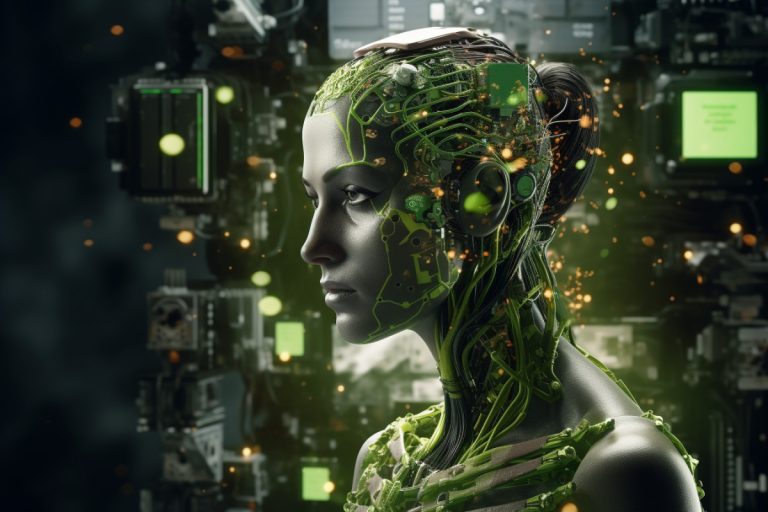Nvidia, a name synonymous with cutting-edge technology, has once again made a significant stride in the field of artificial intelligence (AI). This time, it’s an innovative new text-to-image personalization method called Perfusion. This AI image generator is not just another heavyweight model; it’s a compact powerhouse that takes up only 100KB of space and requires a mere 4 minutes of training.
The Power of Perfusion
Perfusion is a product of collaborative research by Nvidia and Tel-Aviv University in Israel. Despite its small size, it outperforms leading AI art generators like Stability AI’s Stable Diffusion v1.5, the newly released Stable Diffusion XL (SDXL), and MidJourney in terms of efficiency of specific editions.
Key-Locking: The Core of Perfusion
The main innovation in Perfusion is a concept called “Key-Locking.” This technique connects new concepts that a user wants to add, like a specific cat or chair, to a more general category during image generation. For instance, the cat would be linked to the broader idea of a “feline.”
Overcoming Overfitting
Key-Locking helps avoid overfitting, a common issue where the model gets too narrowly tuned to the exact training examples. Overfitting restricts the AI’s ability to generate new creative versions of the concept. By tying the new cat to the general notion of a feline, the model can portray the cat in many different poses, appearances, and surroundings, while still retaining the essential “catness” that makes it look like the intended cat, not just any random feline.
Why Nvidia Thinks Less Is More
Perfusion also enables multiple personalized concepts to be combined in a single image with natural interactions. This is unlike existing tools that learn concepts in isolation. Users can guide the image creation process through text prompts, merging concepts like a specific cat and chair.
Balancing Visual Fidelity and Textual Alignment
Perfusion offers a remarkable feature that lets users control the balance between visual fidelity (the image) and textual alignment (the prompt) during inference by adjusting a single 100KB model. This capability allows users to easily explore the Pareto front (text similarity vs image similarity) and select the optimal trade-off that suits their specific needs, all without the necessity of retraining.
Comparing with Other AI Image Generators
Other AI image generators have ways for users to fine-tune output, but they’re bulky. For instance, a LoRA, a popular fine-tuning method used in Stable Diffusion, can add anywhere from dozens of megabytes to more than one gigabyte (GB) to the app. Another method, textual inversion embeddings, are lighter but less accurate. A model trained using Dreambooth, the most accurate technique right now, weighs more than 2GB.
Nvidia’s Perfusion: Superior and Efficient
In comparison, Nvidia says Perfusion produces superior visual quality and alignment to prompts over the leading AI techniques mentioned before. The ultra-efficient size makes it possible to just update the parts that it needs to when it fine-tunes how it’s producing an image, compared to the multi-GB footprint of methods that fine-tune the entire model.
Nvidia’s Growing Focus on AI
This research aligns with Nvidia’s growing focus on AI. The company’s stock has surged over 230% in 2023, as its GPUs continue to dominate training AI models. With entities like Anthropic, Google, Microsoft, and Baidu pouring billions into generative AI, Nvidia’s innovative Perfusion model could give it an edge.
Conclusion
Nvidia’s AI image generator, Perfusion, is a game-changer in the AI art creation landscape. With its compact size, short training time, and superior performance, it’s set to revolutionize the way we generate AI art. As Nvidia continues to innovate and push the boundaries of what’s possible with AI, we can only expect more groundbreaking developments in the future.
FAQs
1. What is Nvidia’s Perfusion? Perfusion is an innovative new text-to-image personalization method developed by Nvidia. It’s a compact AI image generator that takes up only 100KB of space and requires just 4 minutes of training.
2. How does Perfusion’s Key-Locking work? Key-Locking connects new concepts that a user wants to add, like a specific cat or chair, to a more general category during image generation. This helps avoid overfitting and allows the AI to generate new creative versions of the concept.
3. How does Perfusion compare with other AI image generators? Despite its small size, Perfusion outperforms leading AI art generators in terms of efficiency of specific editions. It also allows users to control the balance between visual fidelity and textual alignment during inference by adjusting a single 100KB model.
4. What is the significance of Nvidia’s Perfusion? Perfusion aligns with Nvidia’s growing focus on AI. It’s an innovative model that could give Nvidia an edge in the competitive field of generative AI, where companies like Anthropic, Google, Microsoft, and Baidu are investing heavily.




